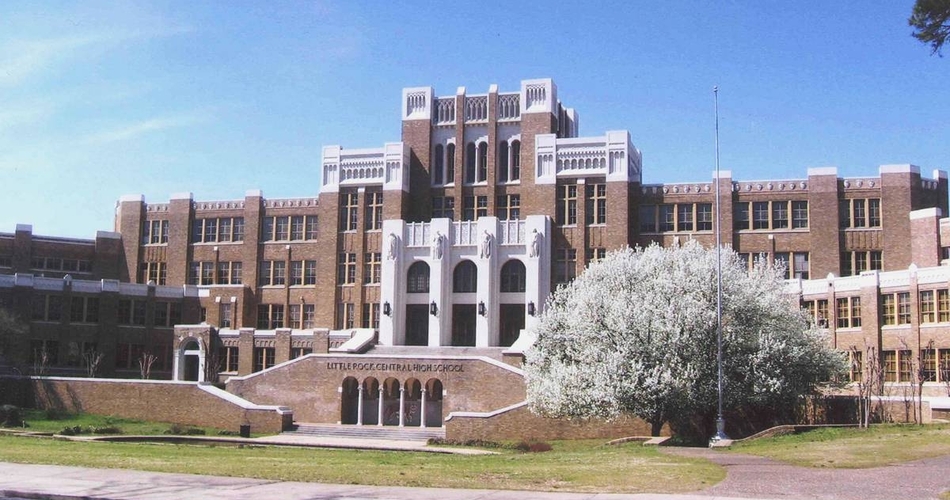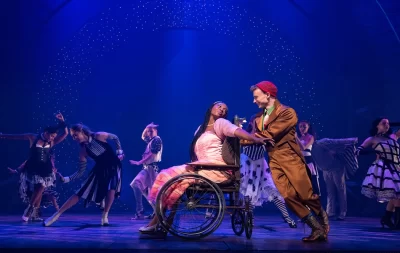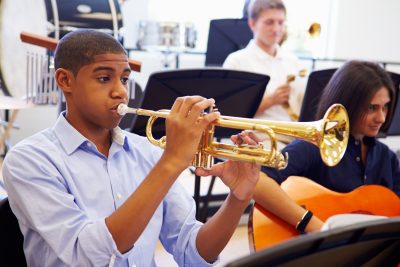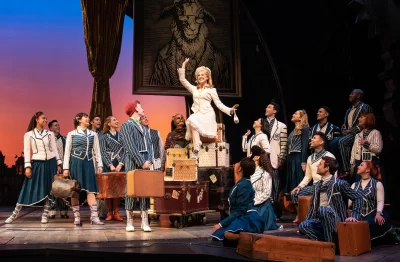From Little Rock Central High School to a museum celebrating Arkansas civil rights activists, this state offer important lessons in the journey against racism
The state capital saw major civil rights battles unfold in the 1950s and ’60s. Claiming Arkansas’ most important civil rights sites, Little Rock counts six locations on the U.S. Civil Rights Trail, a collection of 140 places across 14 states. Sites are concentrated in the city’s downtown area.
Little Rock Central High School National Historic Site
In September 1957, Little Rock Central High School commanded international attention when Governor Orval E. Faubus, an opponent of racial integration, ordered the Arkansas National Guard to prevent nine black students from attending the all-white school. President Eisenhower sent in federal troops to escort the students to class. Following a talk at the National Park Service visitors center, a ranger takes groups across the street to the school grounds and the restored gas station where reporters used the phone to call in their stories detailing the turmoil, which included threats from angry white crowds. The brave students became known as the Little Rock Nine. The visitors center offers historic video clips of the confrontations and interviews with the nine trailblazers. Central High, an impressive blend of Art Deco and Gothic Revival styles, is still a functioning school, with an enrollment of 2,500.
Little Rock Nine Memorial in Arkansas
Located on the Arkansas State Capitol grounds, the sculpture Testament features life-size bronze statues of the Little Rock Nine and plaques bearing quotations from each of them. The nine are Ernest Green, Minnijean Brown, Elizabeth Eckford, Thelma Mothershed, Melba Pattillo, Gloria Ray, Terrence Roberts, Jefferson Thomas and Carlotta Walls. Except for Thomas, all are still alive, and two live in Little Rock. Purposefully, the figures face the governor’s office window to serve as a constant reminder to whoever holds the office to do what is morally just.
Mosaic Templars Cultural Center
This African American history museum celebrates Arkansas civil rights activists, innovators and entrepreneurs. Visitors can view artwork by black artists with an Arkansas connection, listen to firsthand accounts of life in the segregated South and learn about Little Rock’s once-thriving West Ninth Street district, now a mostly vacant commercial area. In its heyday, the six-block stretch bustled with black-owned stores, restaurants, theaters and music clubs. The museum resides in the footprint of the Mosaic Templars of America national headquarters, a prominent African American fraternal organization founded in 1882. Mosaic Templars provided illness, death and burial insurance during an era when few basic services were available to black people.
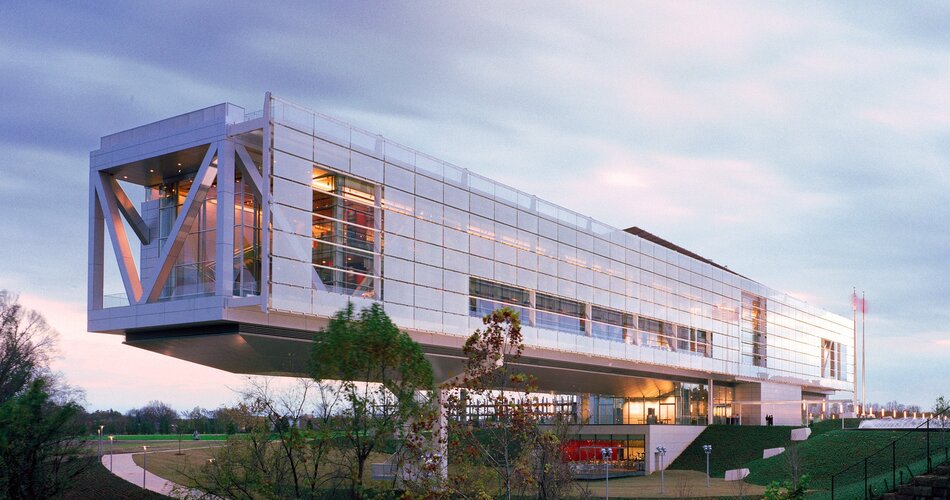
Clinton Presidential Center
William J. Clinton Presidential Library & Museum
Among the permanent exhibits are those chronicling President Clinton’s efforts to promote racial reconciliation and close widening economic and social gaps. Museum highlights includes replicas of the White House’s Oval Office and Cabinet Room.
Arkansas Civil Rights Heritage Trail
Starting at the Old State House Museum and extending eastward on Markham Street toward the Clinton Library & Museum, the trail features an ever-growing collection of sidewalk markers and medallions that recognize Arkansans who worked to secure social justice. Honorees include sit-in participants and those involved in the Central High School desegregation crisis. One sign marks the site of a Midwest Trailways bus station where Freedom Riders from St. Louis were arrested upon their arrival on July 10, 1961. Freedom Riders were groups of white and black civil rights activists who rode interstate buses into the South to protest segregation on buses and in bus terminals.
Daisy Bates House Museum in Arkansas
The home of L.C. and Daisy Bates, civil rights activists and publishers of the local black newspaper, served as the headquarters for the Little Rock Nine during the 1957 Central High School desegregation crisis. They had numerous objects hurled at their home, and several fiery crosses—an emblem of the white supremacist terror organization the Ku Klux Klan—burned on their lawn.
If you’d like to Get More Field Trip Ideas, be sure to Subscribe to Student Travel Planning Guide and Download our Current Issue for FREE

